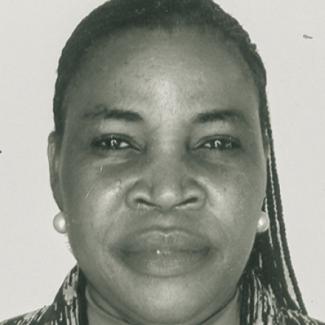Urban infrastructure
Urban headaches
By Bimbola Oyesola
Cities grow mainly through rural-urban migration. That is true of Lagos. What was a town of around 300,000 people in 1950 had become a metropolitan area with a population of more than 17 million by 2006 (census data). The state government reckons the population is growing by about 500,000 every year.
Lagos is one of the world’s two dozen or so megacities (agglomerations with more than 10 million people). Nigeria’s Federal Government estimates that Lagos State will have expanded to 25 million residents by 2015. Such growth will create immense problems, as can be seen in Lagos – even today.
A short history of the megacity
Geographically, Lagos is located in the south-western part of the country. Lagos State borders the Republic of Benin in the West and the Atlantic Ocean in the South. The state is made up of the city and its conurbation.
First inhabited before the 15th century, Lagos grew from a small fishing and farming settlement on an island to a coastal town. The Portuguese who arrived in 1472 gave the island its present name of Lagos. The town was later noted for its role in the slave trade in the 17th century.
In 1861, Lagos became a colony of the British. When the Protectorate of Nigeria was subsequently formed in 1914, Lagos was declared its capital. It remained Nigeria’s administrative capital after the nation became independent in 1960, until the seat of government moved to Abuja in December 1991. Lagos, however, was denied any special status as former political and administrative headquarter of the kind that Germany gave Bonn when the government moved to Berlin.
Nonetheless, Lagos continued flourishing as a trade centre. Migrants came to settle there. As the population of Lagos increased, spatial expansion became inevitable.
Lateef Ibirogba, Lagos State’s commissioner for information, attributes the rise in population to the fact that Lagos is the social and commercial hub of the country, and that it hosts the headquarters of multinational companies. Various economic activities encourage population growth, due to rural-urban migration and foreign migrants in search of better opportunities.
Lagos is popularly referred to as a city that never sleeps. Indeed, commercial activities take place in many parts of this city 24 hours every day, with an international airport and a busy seaport. Lagos is a dream city for millions of Nigerians, and its population soars as people from all over the country flock to it in search of greener pastures, sometimes real, sometimes elusive.
Joe Igbokwe, the general manager of the Lagos State Infrastructure Maintenance and Regulatory Agency (LASIMRA), says that presently Lagos accounts for about 60 % of economic growth in Nigeria. About 80 % of the nation’s industry is based in this state, which is also the main financial centre of West Africa. But Lagos is not only a centre of gravity for professionals, it also has a vibrant and even aggressive informal economic sector.
Given the multiple pressures, the public investments in social infrastructure seem like a drop in the ocean. The condition of the roads is appalling. Public schools are congested. Health centres are grossly inadequate. Thousands are jobless and homeless. All too often, violent crime becomes an option for frustrated minds and idle hands.
The rapid population growth in Lagos Metropolis results in shortages of housing and growth of slums, lack of housing finance and failure of the urban community as a whole to adapt to changing conditions. Institutions and social services are not coping with the influx of migrants. The population increase has a direct impact on land use; it results in the demand for more land. Industry has occupied a significant proportion of the metropolis, and this has given rise to even more problems such as heavy traffic and industrial pollution.
In order to decongest the metropolitan centre and ensure the development of the state as a whole, the state government is trying to create new towns on the periphery of the agglomeration. It also wants to ensure the orderly development according to zones for housing, industry, commerce and other purposes. But in the past decades, the agglomeration grew faster than planers could manage.
Infrastructure challenges
Lagos State accounts for 40 % of Nigeria’s electricity consumption. Power generation at the national level only satisfies about one third of demand. Out of necessity, Lagos State has been in the forefront of generating power for its residents. It is running some power plants of its own. The state also inaugurated a transformer manufacturing factory last year.
A daily feature on Lagos roads is the traffic gridlock. At times, it makes living in Lagos a real hell. It takes some people three hours to get home from work. An important reason is the sad condition of roads. Most were constructed in the 1970s and were supposed to serve a population that was still much smaller. Nobody expected this level of expansion in the 21st century.
In order to mitigate some of the transportation problems, the state government has cooperated with private investors and created a system of mass transit buses in the past four years. This new Bus Rapid Transit (BRT) system has ameliorated transportation problems of many people. Another project undertaken by the present administration could also result in less stress for commuters: the Blue Line rail tracks will span the metropolis and link the municipalities of Marina and Okokomaiko. On top of that, the state government is constructing a ten lane road with rail facility from Badagry to Orile.
One of the major challenges to Lagos is the management of sanitation. The drainage system is poor too. It clogs far too often. It is a common occurrence to see residents emptying their wastes in the rain. Floods were devastating and recurring last year. The damage both in terms of loss of human lives and property were colossal. The government has taken steps to improve matters.
Lagos State’s Ministry of Environment has also begun to improve waste disposal by starting public-private partnerships. The government’s effort at beautifying the state’s parks and gardens have started paying off with Lagos looking green irrespective of the season.
The government of Lagos State is facing daunting challenges. They include rehabilitation of existing urban infrastructure and provision of new infrastructure like roads, schools, health facilities, parks and gardens, integrated transportation (land and water), the system of Bus Rapid Transit (BRT), the rehabilitation of criminal gangs (the so-called “area boys”) and security improvement. Unless the authorities tackle these issues, Lagos cannot become one of the world’s liveable megacities.









